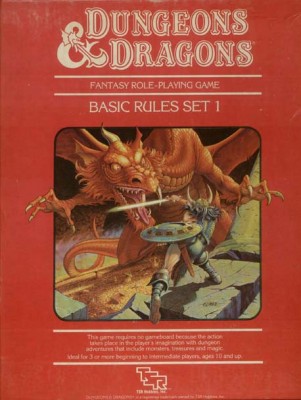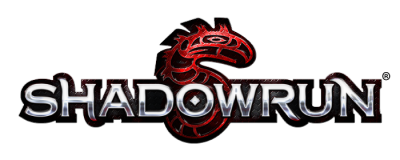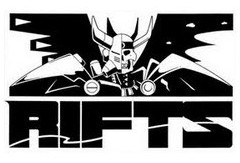My first introduction to tabletop roleplaying games was from a friend at the age of eleven. His older brother played Dungeons & Dragons and Shadowrun, and had introduced him to the hobby. I was already familiar with the Dragonlance novels at that point, having picked them up the year previous, and my debut to roleplaying came at roughly the same time as collectible card games. At the time, I was drawn into the world of fantasy roleplaying, but I was unable to find an engaging science fiction RPG realm to satisfy the part of me in love with the worlds of Heinlein and Asimov, Clarke and Bradbury. While I have been able to find some more options since then, it is never easy. There is, oddly, a lack of engaging sci-fi RPGs on the market despite the wealth of strong science fiction settings that exist in the greater tabletop hobby.
Science fiction has existed in sporadic examples as far back as the 1800s. However, as a full-fledged literary genre it grew out of the speculative fiction movement of the early 20th century, and it began to firmly establish itself in the 1950’s and 1960’s. A truly expansive genre, science fiction separated itself from fantasy fiction through a focus on the future and the development of technology and science to rationalize its settings. While much science fiction incorporates fantastic elements, such as alien races, bizarre worlds, psychic powers, and exotic technologies, it lives in a place that straddles the line between sheer escapism and social commentary. Whereas fantasy fiction’s viewpoint rooted itself in the examination of the past and asks “what if”, science fiction’s eyes looks always to the horizon and postulates how things would become.

The 800 pound Tarrasque in the room…
Nevertheless, as a gaming genre fantasy has always been the dominant form of tabletop RPGs. From its inception in the 1970’s to the modern day, the vast majority of games on the market provide one form or another of fantasy roleplaying. Dungeons & Dragons and its various descendants feature escapist action fantasy where heroes battle dark monsters in various crumbling settings for gold, glory, and the greater good.
White Wolf’s World of Darkness line and its wide family of modern fantasy games all feature a world almost like ours, except with magic and monsters fighting in the shadows. More recently, there has been a rise in alternative Victorian worlds where magic lives, and reality is several shades stranger as a result. Even Call of Cthulhu, inspired by the science fiction horror of H.P. Lovecraft of the 1930’s, leans more fantasy due to the strong influence of August Derleth’s revisionist explanations of Lovecraft’s Great Old Ones.
By contrast, “hard” science fiction (extrapolating the physical sciences and technology into the future along realistic trajectories) as a genre of roleplaying has perpetually been a minority in the industry, whereas “soft” sci-fi (with a larger focus on the characters within the world presented) is much more prevalent as it operates closer to traditional fantasy. For an amusing but concise comparison of the two, I suggest checking this page out.
My desire is to expound on the lack of “hard” science fiction settings. A discussion of science fiction in tabletop gaming would not be complete, then, without first addressing the existent games and their history within the hobby. The few “hard” sci-fi games that do exist and have managed to become successful are not to be trifled with, but they are very tough acts to follow. Many also stand more firmly in the fantasy camp, with science fiction elements, than to truly be considered science fiction. Such examples of this include:
Shadowrun
 Shadowrun contains many elements of a compelling science fiction game, but it is strongly married in equal parts to a fantasy setting. It is, ultimately, a cyberpunk dystopia with magic, and games can embrace either aspect of the setting. Elves, orcs, trolls, and dwarves live alongside humans in a corporate controlled world, where hackers and cybernetic-enhanced super soldiers fight alongside and against wizards, shamans, and dragons.
Shadowrun contains many elements of a compelling science fiction game, but it is strongly married in equal parts to a fantasy setting. It is, ultimately, a cyberpunk dystopia with magic, and games can embrace either aspect of the setting. Elves, orcs, trolls, and dwarves live alongside humans in a corporate controlled world, where hackers and cybernetic-enhanced super soldiers fight alongside and against wizards, shamans, and dragons.
The world of 2075 in Shadowrun is a terrible place, with a vast divide between the wealthy and the poor, and where people who live outside society’s oppressive regulation can make a steady profit through illegal activities. There is no denying the sci-fi elements of Shadowrun, but it just as easily be played as more of a modern set fantasy with high action, high magic, and evil corporations. Ultimately, however, it is how Shadowrun treats technology and magic as being antithetical to each other that keeps it from being truly science fiction. Magic is forever a supernatural force, and cannot be rationalized, bottled, and explained.
Star Wars
 Star Wars has enjoyed many licensed games throughout the years, but the Star Wars universe is much closer to a fantasy setting with science fiction elements. The setting of the story is vaguely set in a distant place, in a much distant history. The visual aesthetic of the films evoke a classical world, not unlike Ancient Rome or Lost Atlantis, where a mystic tradition of intermediaries has been lost.
Star Wars has enjoyed many licensed games throughout the years, but the Star Wars universe is much closer to a fantasy setting with science fiction elements. The setting of the story is vaguely set in a distant place, in a much distant history. The visual aesthetic of the films evoke a classical world, not unlike Ancient Rome or Lost Atlantis, where a mystic tradition of intermediaries has been lost.
While the western elements are also strong, with its blaster pistols and wild frontier planets, the wealth of strangely humanoid alien races, the plot device of hyperspace travel, and the simple existence of the mystical Force keeps Star Wars more firmly on the fantasy side of space opera. The vociferous response to the introduction of Midi-chlorians in the films shows how strongly the setting itself is tied to its mysticism, as even a passing scientific explanation to how people are aware of the Force was strongly rejected by most fans. Despite its droids, blasters, and space ships, Star Wars is a fantasy western set in space, not truly science fiction.
Warhammer 40K
 The universe of Warhammer 40,000 is as grim and dark as the Star Wars world is bright and pleasing. Still, of all the purportedly science fiction settings well known as gaming staples, Warhammer 40K contains the widest array of fantasy elements. It contains elves and orks, dwarves and undead, all as alien races which are as old or are older than humanity. Warhammer even features demons from the Warp, an alternate dimension which is utilized as a special travel plane and grants beings in the universe powerful psychic abilities. In the setting itself, the Warp is the source of a spiritual, psychic power and corruption, and it interacts with all levels of life. The visual aesthetic of Warhammer 40K relies on the classical influence of Gothic architecture and medieval xenophobia. Still, Warhammer 40K at least manages to incorporate solid science fiction elements, in both its biological superweapon Tyrannids and the technologically focused Tau. It also captures a sheer size and cosmic scale that few other games do, with numbers in the hundreds of thousands of humans dying day by day being little more than a statistic within the setting.
The universe of Warhammer 40,000 is as grim and dark as the Star Wars world is bright and pleasing. Still, of all the purportedly science fiction settings well known as gaming staples, Warhammer 40K contains the widest array of fantasy elements. It contains elves and orks, dwarves and undead, all as alien races which are as old or are older than humanity. Warhammer even features demons from the Warp, an alternate dimension which is utilized as a special travel plane and grants beings in the universe powerful psychic abilities. In the setting itself, the Warp is the source of a spiritual, psychic power and corruption, and it interacts with all levels of life. The visual aesthetic of Warhammer 40K relies on the classical influence of Gothic architecture and medieval xenophobia. Still, Warhammer 40K at least manages to incorporate solid science fiction elements, in both its biological superweapon Tyrannids and the technologically focused Tau. It also captures a sheer size and cosmic scale that few other games do, with numbers in the hundreds of thousands of humans dying day by day being little more than a statistic within the setting.
While these are the most popular of the settings which straddle the line between fantasy and science fiction, their dominant elements land them more firmly in the former camp than the latter. Warhammer focuses on the soul-devouring evil of the Warp and the inevitable cost of human life that a long, losing battle against it would cause. Star Wars can focus on the gritty exploits of a smuggler and his crew of ne’er-do-wells, but most games deal with the mysticism of the Force and how small heroes can change the shape of a powerful kingdom. Of the three, Shadowrun stands closest to actual science fiction, with its strong social commentary about a capitalist paradise and how it responds to a vast social upheaval. Still, it is impossible to firmly divorce the game from its Tolkien-inspired races and mysterious magic.
Other games stand more firmly planted in science fiction, using fantasy elements in ways the above games use science fiction elements. As opposed to being games of fantastic escapism or a struggle of good vs. evil, these games rest firmly in morally murky grounds in worlds that are still drawn into the same problems as ours. These games enjoy less success than the major lines above, but are no less compelling in their ability to tell a story:
Fading Suns
 Fading Suns tells a story of a world-spanning human empire in the grip of a new Dark Age, where noble families control entire star systems and feud against each other and with a Church that finds technology heretical. While the average person’s life in this setting is no different than a medieval serf’s, the game features a setting filled with powerful technology and social commentary. Even its fantasy elements fit closer to its science fiction core, with its psychics being studied and understood through scientific means and its alien races being truly inhuman in many of their natures. The threats to the world are not universally evil, and none of the sides in setting are universally good. Instead, the single greatest threat in the setting is simply the fact that all the suns in the known universe are beginning to burn out, and no one knows truly why.
Fading Suns tells a story of a world-spanning human empire in the grip of a new Dark Age, where noble families control entire star systems and feud against each other and with a Church that finds technology heretical. While the average person’s life in this setting is no different than a medieval serf’s, the game features a setting filled with powerful technology and social commentary. Even its fantasy elements fit closer to its science fiction core, with its psychics being studied and understood through scientific means and its alien races being truly inhuman in many of their natures. The threats to the world are not universally evil, and none of the sides in setting are universally good. Instead, the single greatest threat in the setting is simply the fact that all the suns in the known universe are beginning to burn out, and no one knows truly why.
Rifts
 Rifts is set on a post-apocalyptic Earth where humanity’s technology advanced beyond their means to control it, and it lead to a massive destabilization of reality itself. Titular rifts began opening up all over the world, leading to other alternative Earths and other places in the universe where the laws of physics and reality are different. Massive invasions from these others worlds began, and everything in the world fell apart.
Rifts is set on a post-apocalyptic Earth where humanity’s technology advanced beyond their means to control it, and it lead to a massive destabilization of reality itself. Titular rifts began opening up all over the world, leading to other alternative Earths and other places in the universe where the laws of physics and reality are different. Massive invasions from these others worlds began, and everything in the world fell apart.
While Rifts does feature magic casters, fantasy races, and other strong fantasy aspects, the reasons for their existence in the setting is strictly one of science fiction. Ascribing to the One Big Lie approach of science fiction, Rifts asks the question of what would happen if a technologically advanced human race made a way to access any possible world, and then lost control of it. The majority of the game focuses on enhanced humans, genetically modified animals, and technological wonders. It is here where hundred foot tall robots battle extradimensional dragons, and magic can be harnessed as an energy source by technology.
CthulhuTech
 CthulhuTech offers one of the harder looks at the Lovecraft mythos, marrying it to the frenetic energy of several different anime inspirations. In the world of CthulhuTech, the forces previously believed to be supernatural are merely aspects of reality previously misunderstood by science. Through the application of quantum mechanics, effects previously considered magical began to be understood. Humanity uses the shortcuts previously considered magical to create a perpetual energy source, and that is when the alien Migou decide to wipe out the entire species.
CthulhuTech offers one of the harder looks at the Lovecraft mythos, marrying it to the frenetic energy of several different anime inspirations. In the world of CthulhuTech, the forces previously believed to be supernatural are merely aspects of reality previously misunderstood by science. Through the application of quantum mechanics, effects previously considered magical began to be understood. Humanity uses the shortcuts previously considered magical to create a perpetual energy source, and that is when the alien Migou decide to wipe out the entire species.
Several decades later, humanity is locked in a four-way war for survival with the alien Migou, the extradimensional (and insane) Rapine Storm serving an entity called Hastur, and the Esoteric Order of Dagon. In the shadows of this war against extinction, various cults and corporations are at work, furthering chaos and the inevitable destruction of the human race. CthulhuTech’s approach to the mysticism of Lovecraft stems from utterly debunking it and incorporating it into its world’s “better” understanding of science. Its aliens are truly horrific and inhuman, its psychics and sorcerers are just manifesting the quantum instability of the universe, and their more bizarre elements are results of combining those two factors.
Each of these three games incorporate fantastic elements into their settings, while remaining strongly in the realm of science fiction. However, their success in the industry is nowhere near what is enjoyed by some of the more well-known fantasy lines, and each is not without their faults. Fading Suns is rather strongly tied to its own metaplot – which has remained untouched at two thirds complete for over a decade despite several rules updates. Rifts is well known throughout most gaming circles, but gameplay is notoriously unbalanced. CthulhuTech has had a troubled publication history, switching producers more than once, and it strongly pushes the envelope in both subject matter and playability of its system. Each are, however, excellent examples of science fiction RPGs, although they are closer to the “softer” side of the spectrum.
These examples are not alone, however. Indeed, there are further games that stand up as excellent examples of “hard” science fiction RPGs, and I will discuss these in more detail in the next segment. Until then, the spice must flow.
David Gordon is a regular contributor to the site. A storyteller by trade and avowed tabletop veteran, he can be reached at dave@cardboardrepublic.com.
You can discuss this article and more on our social media!
